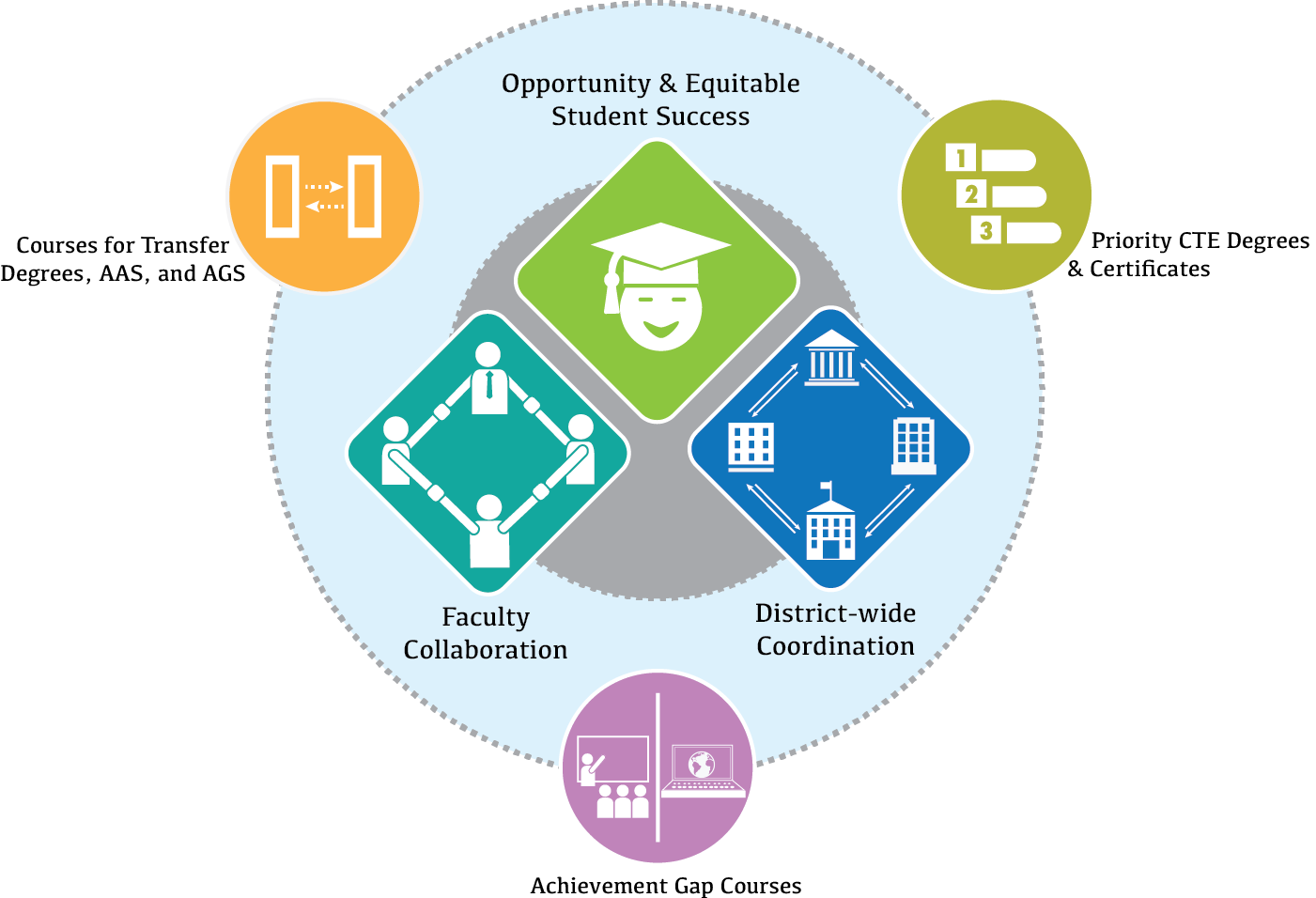Priorities for online course development
The following priorities for online course development center on promoting equitable student success, facilitating cross-district coordination, and encouraging faculty collaboration to foster high-quality course design.

To support equitable student success, requests for course developments and revisions should focus on:
1. Courses for transfer degrees, AAS, and AGS degrees
Online course developments in this area should focus on courses not yet offered online that meet requirements for the AAOT, ASOTB, OTM, AAS and AGS degrees. Revisions should also focus on courses that meet these requirements. Please consider the number of courses that already exist online that may fulfill a transfer requirement or general elective before submitting requests.
Opportunities for development of courses include:
- Expanding options in Art
- Expanding lab sciences for transfer including: BI 101, BI 112, BI 141, BI 142, BI 143, BI 202, ESR 171, ESR 172, ESR 173, GS 106, GS 108, & GS 109
- MTH 241
- High enrollment world language courses, such as SPA 101, SPA 102, SPA 103
2. Fully online CTE degrees and certificates
Online course developments and revisions in this area should focus on courses that expand access to a fully online CTE degrees or certificates or that support the CTE degrees and certificates currently offered fully online. Programs wishing to expand to fully or partially online may be required to provide information on 3 – 5 year program plans.
3. Opportunity gap courses
Course revisions in this area should focus on courses where there is a significant gap between online and face-to-face sections, or the online success rates are low overall.
Requests Should Consider
- Priorities. Consider how the course requests aligns with the priorities outlined above as well as the long-term plans of the program, and/or related degrees and certificates. For example, is the goal for this course to support expansion of an eventually fully online CTE certificate? Is the course fulfilling a transfer or discipline gap in the current online offerings?
- Faculty Availability. Consider the number of faculty available to build or revise the course with the instructional design team, faculty available to teach a course once it is developed, and willingness of SAC to promote the sharing of course with other faculty.
- Enrollment and Scheduling.Consider how the online course will fit in with the scheduling of other face-to-face and remote sections of the same course. Can this course garner adequate enrollment to sustain offering it multiple modalities or is the plan to only offer the course online?
